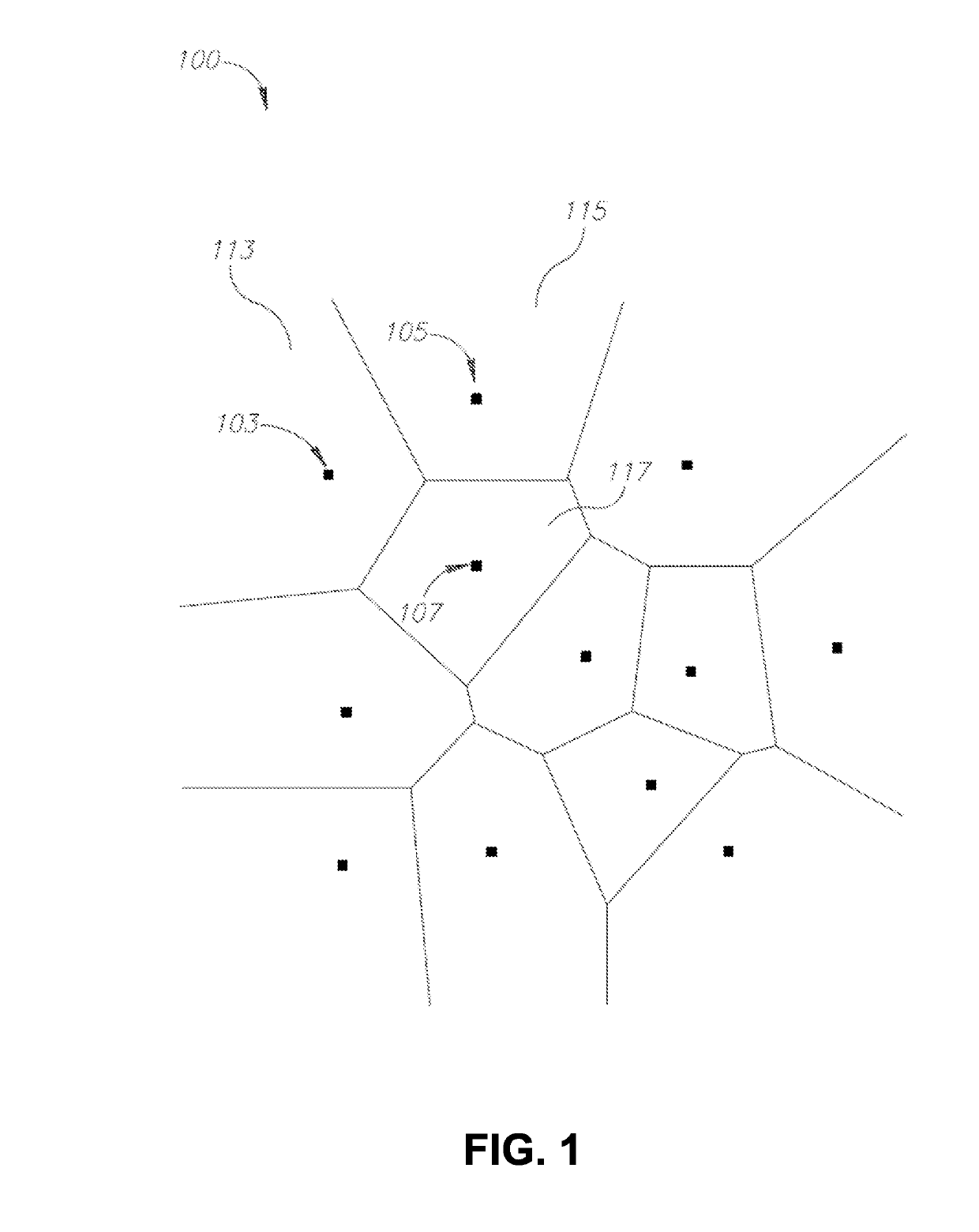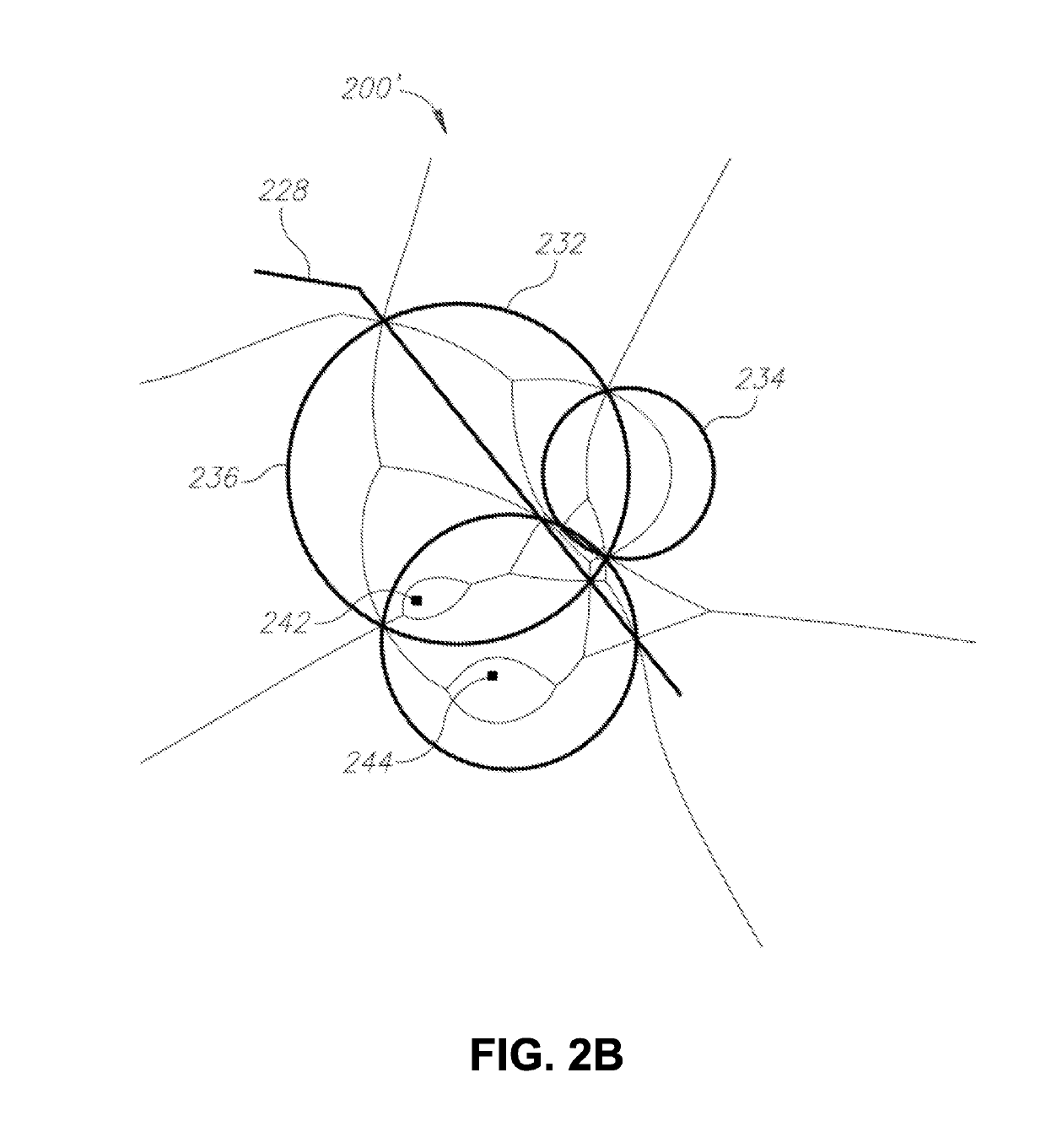Method, apparatus and product for efficient solution of nearest object problems
a technology for solving problems and nearest objects, applied in the field of spatial analysis, can solve problems such as high inefficiency for practical situations, no efficient solutions that are commonly available, and relatively easy to implemen
- Summary
- Abstract
- Description
- Claims
- Application Information
AI Technical Summary
Benefits of technology
Problems solved by technology
Method used
Image
Examples
Embodiment Construction
[0017]One technical problem dealt with by the disclosed subject matter is to provide efficient solution to nearest object problems, involving objects of any given shape and geometric representation.
[0018]One technical solution is to sample each object in the input set to obtain a set of representative points, construct a Voronoi diagram for the entirety of the sample points, and unite areas of cells that contain sample points of the same original object. As a result, a subdivision of the space accommodating the set of objects into regions is obtained, such that a point in each region is nearest to a sample point, and by this virtue o also to the respective sampled object, in most cases at least. The solution accuracy may depend on the sampling density, as well as on other factors, such as the precision level of the data types used (e.g., floating-point numbers or the like), accuracy of the real-world measures by which the input data is obtained, and the like.
[0019]In some exemplary ...
PUM
 Login to View More
Login to View More Abstract
Description
Claims
Application Information
 Login to View More
Login to View More - R&D
- Intellectual Property
- Life Sciences
- Materials
- Tech Scout
- Unparalleled Data Quality
- Higher Quality Content
- 60% Fewer Hallucinations
Browse by: Latest US Patents, China's latest patents, Technical Efficacy Thesaurus, Application Domain, Technology Topic, Popular Technical Reports.
© 2025 PatSnap. All rights reserved.Legal|Privacy policy|Modern Slavery Act Transparency Statement|Sitemap|About US| Contact US: help@patsnap.com



